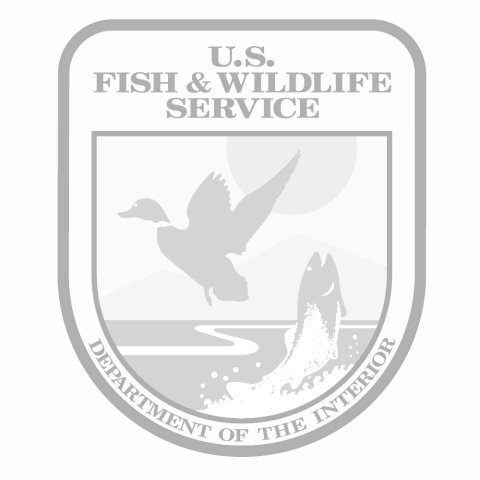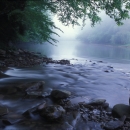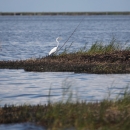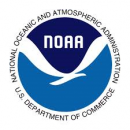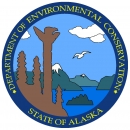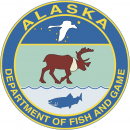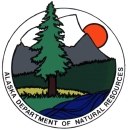Overview
On December 8, 2004, the 738-foot cargo vessel M/V Selendang Ayu, ran aground and broke in half off Unalaska Island in the Aleutian Islands. Six of the vessel’s crew members were lost in the rescue effort. The cargo vessel, which was bound to Asia with a 60,000-ton soybean load, was carrying approximately 425,000 gallons of Intermediate Fuel Oil 380 and 21,000 gallons of marine diesel oil. An estimated 354,218 gallons of those oils were released into the environment. For more information about the oil spill cleanup effort, visit the Alaska Department of Environmental Conservation’s Selendang Ayu website.
While the Unified Command worked to contain and clean up the oil, the Natural Resource Trustees investigated the impacts of the oil spill as part of the natural resource damage assessment and restoration (NRDAR) process. Approximately 86 miles of shoreline habitat were oiled. Much of the affected shoreline is managed as part of the Alaska Maritime National Wildlife Refuge. Some of the shoreline oiling persisted to at least 2008. The Trustees collected 1,795 dead birds, but there are always more animals that die during an oil spill than are collected. At least two sea otters are known to have died due to the spill. The Trustees also investigated impacts to other natural resources and to the human uses of all impacted natural resources.
Natural Resource Trustees
U.S. Fish and Wildlife Service (representing the Department of Interior and serving as the Lead Administrative Trustee)
National Oceanic and Atmospheric Administration (for the Department of Commerce)
Alaska Department of Environmental Conservation
Alaska Department of Fish & Game
Alaska Department of Law
Alaska Department of Natural Resources
Status of NRDAR: Restoration Planning Phase
Assessment Activities
Following the spill, the Natural Resource Trustees initiated preassessment studies of potentially injured natural resources. Under the Oil Pollution Act, the purposes of the “Preassessment Phase” of a natural resource damage assessment and restoration (NRDAR) case are to confirm that natural resources have been impacted, to confirm that the Trustees have the jurisdiction to conduct an NRDAR for the incident, and to collect ephemeral data that may be needed later, in the "Restoration Planning Phase", to quantify injury or evaluate restoration alternatives. The Trustees entered the Restoration Planning Phase in March 2007.
Working in cooperation with representatives of Ayu Navigation Snd and IMC Shipping (the Responsible Party) since soon after the incident began, the Trustees examined potential injuries to seabirds, marine mammals, other marine resources (e.g., shoreline habitats, anadromous fish, and shellfish), and human uses of injured natural resources. However, the Responsible Party eventually exceeded its statutory limit on liability for cleanup and NRDAR costs, as confirmed by the Coast Guard’s National Pollution Funds Center in January 2012. No longer liable for the costs of the NRDAR or the compensatory restoration that would make the public whole for the harm to natural resources caused by an oil spill, the Responsible Party ended its participation in the NRDAR. In situations like this, funding from the Oil Spill Liability Trust Fund (managed by the National Pollution Funds Center) can be available to support the Trustees’ efforts in completing the NRDAR and implementing restoration.
The Trustees published a final Assessment Plan for the Selendang Ayu case in January 2016 and obtained funding from the Oil Spill Liability Trust Fund in January 2018 to complete the quantification of natural resource injuries, develop restoration ideas, and prepare a Restoration Plan for public review. The Trustees' current work focuses on four resource categories: marine birds, marine mammals, other marine resources (i.e., subtidal, intertidal, and supratidal shoreline habitats; anadromous fish stream habitat; and the organisms using those habitats), and the human uses of those injured natural resources.
Overview of Future Restoration Planning Work
The ultimate goal of NRDAR is to implement restoration projects that would make the public whole for the harm done to natural resources as a result of an oil spill. The Trustees will seek input from stakeholder and local groups during the development and evaluation of restoration ideas.
An important part of the Restoration Planning Phase is the scaling of restoration projects, in which the Trustees determine the appropriate size of a restoration project so that the natural resource benefits produced by the project would adequately offset the quantified harm caused by the oil spill. The results of the injury assessment and restoration planning activities will be documented in a draft Restoration Plan that will be made available for public review and comment. The final Restoration Plan would be the basis for an application to the National Pollution Funds Center for funding to implement restoration.
Contact Information
